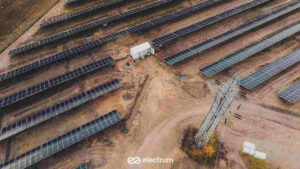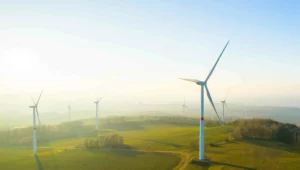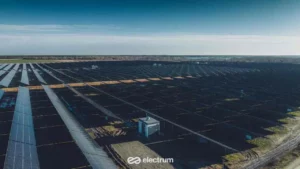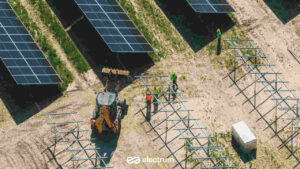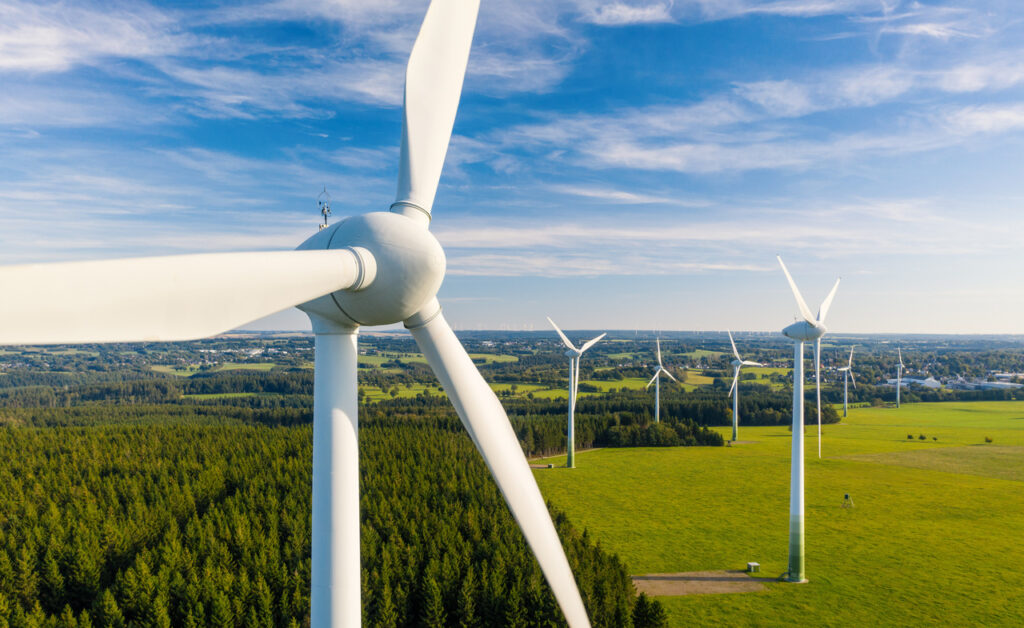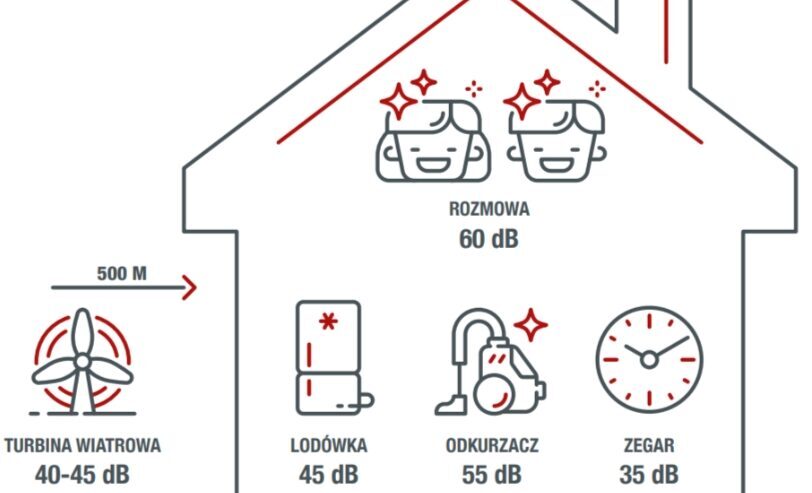A comprehensive solar power system design process encompasses all stages necessary for the design, construction, commissioning, and maintenance of a photovoltaic farm. The project takes into account all technical, legal, financial, and environmental aspects related to the investment. Below, we present the main elements of the process that constitute a solar power plant design.
Development of a Solar Farm – STAGES
1. Determining Property Potential – Preliminary Verification
The designer considers all factors influencing the final shape of the investment, including:
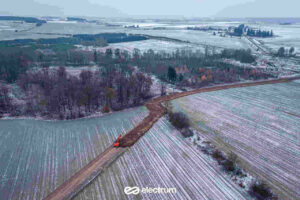
- Sunlight levels,
- Terrain features,
- Land use structure,
- Availability of infrastructure, e.g., access roads,
- Presence of conflicting objects limiting the feasibility of the PV farm, such as technical infrastructure corridors, wooded areas, ponds,
- Location relative to the distribution system operator (DSO)/transmission system operator (TSO) infrastructure,
- Location relative to legal forms and nature protection forms,
- Legal aspects, e.g., related to ownership or spatial planning.
2. Local vision
This stage evaluates whether the chosen land is suitable for installing photovoltaic panels. It includes activities such as:
- Verification of the actual terrain and land use, including the presence of conflicting objects,
- Property inventory,
- Inventory of potential connection line routes,
- Site inspection of potential connection points,
- Verification of access possibilities to the property.
3. Concept Design of Solar Power Plant
The concept design of the solar power plant is a preliminary plan that includes basic technical and organizational assumptions. It largely results from the work described in points 1 and 2. It includes:
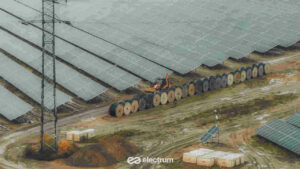
- Placement of photovoltaic panels and inverters,
- Placement of transformer stations,
- Diagram of low voltage (LV) and medium voltage (MV) cable lines,
- Layout of internal roads,
- Mapping potential routes for connection lines.
The concept design forms the basis for further, more detailed studies. It provides information on forecasted annual yields and investor costs.
How to Fully Utilize Your Land’s Potential?
At Electrum Ventures, we propose optimal solutions aimed at maximizing the potential of your plot. Collaboration with an experienced and trusted partner is crucial for increasing profits from a solar farm.
Learn more about how we do it: What We Do – PV Farm Design and Renewable Energy Project Development | Electrum Ventures
4. Lease/Ownership
Implementing a photovoltaic project requires settling legal matters regarding land ownership or lease. Both leasing land for a photovoltaic farm and purchasing it have their advantages, with the choice depending on the investment strategy and local conditions. Leasing agreements are generally the more popular form of obtaining land use rights.
Check the potential of your land by filling out the form at: We are looking for land
5. Environmental Decision
An environmental decision is required if the area defined by the outer contour of the photovoltaic panels exceeds 0.5 hectares in protected areas or 2 hectares in other areas. This decision specifies the method of implementing the PV farm to minimize its environmental impact. Therefore, the ED imposes additional restrictions to minimize or compensate for the negative impact of the PV farm on the environment.
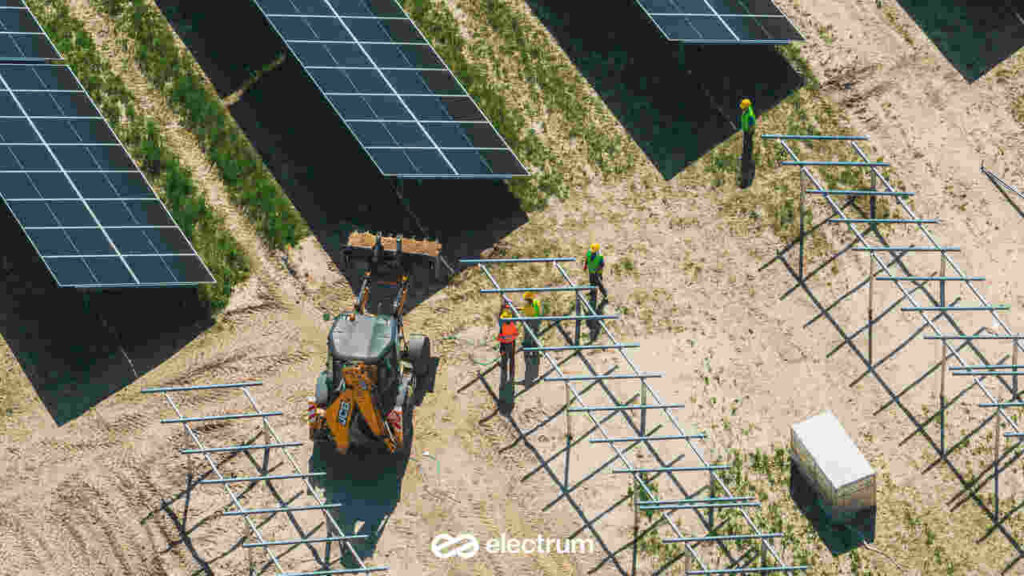
Depending on factors such as the scale of the photovoltaic farm and its location, it may be necessary to prepare an environmental impact report (EIR) based on year-round environmental inventory. The EIR is an element that significantly prolongs the process of obtaining the ED, which is often more stringent.
This decision results from an environmental impact assessment (EIA) that analyzes the potential impact of the investment on local fauna, flora, and other environmental aspects.
6. Building Conditions Decision and/or Local Spatial Development Plan
Verification of the local spatial development plan (LSDP) is necessary to ensure that the planned investment complies with local regulations and policies. In the absence of an LSDP, obtaining a building conditions decision (BCD) is required, determining the feasibility of implementing the photovoltaic project on the given land. However, it should be noted that BCDs will only be issued until December 31, 2025. From January 1, 2026, photovoltaic farms will be located solely based on the LSDP.
7. Connection Conditions for the Solar power plant
Connection conditions are a document issued by the Distribution System Operator (DSO) or Transmission System Operator (TSO). It specifies the technical requirements (connection point and voltage, and the scope of tasks to be performed by both the connecting entity and the Operator) related to connecting the photovoltaic farm to the National Power System (NPS).
Unfortunately, the number of rejected applications increases year by year. The most common reasons are technical premises, followed by economic premises and economic-technical premises. Therefore, knowledge on how to effectively obtain connection conditions is crucial.
Read the article: How to Effectively Obtain Connection Conditions for a PV Farm?
8. Solar energy construction projects
The construction project of the solar power plant is detailed technical documentation necessary to obtain a building permit (BP). It is a set of documents and plans presenting the construction investment in the form and scope specified in the relevant Regulation of the Minister of Development (Journal of Laws 2020, item 1609). For the realization of photovoltaic farms, it includes, among other things, all necessary information regarding the site development plan, photovoltaic farm construction, and electrical installations.
Under current law, the construction project consists of three technical studies:
- Land development project (plot),
- Architectural and construction project,
- Technical project.
Main Elements of the Solar Power System Design
- Land Development Plan: Layout of photovoltaic panels, cables, support structures, and other infrastructure elements on the solar farm site.
- Project Descriptions: Including information on technical parameters, standards, norms, and installation requirements.
- Construction Solutions: Covering the type of components, dimensions, or wind and snow loads.
- Electrical Solutions: Design of the photovoltaic farm’s electrical installation, covering the layout of cables, protections, measuring points, as well as the connection method to the power grid and electrical diagrams of the photovoltaic panels, inverters, transformers, monitoring, and control systems.
- Geodetic Documentation: Including a map for design purposes, maps, plans, and geodetic profiles of the land necessary for the correct placement of photovoltaic panels and technical infrastructure.
- Technical Specifications: For used components, including photovoltaic panels, inverters, support structures, cables, protections, and equipment.
Map for Design Purposes
A map for design purposes is a detailed cartographic study showing the terrain features, location of existing objects, and technical infrastructure. It is essential for preparing an accurate construction project for the photovoltaic farm.
Solar Power System Design and Development
After obtaining all necessary permits, the investment implementation can begin. This stage includes the solar farm construction, installation of panels, inverters, cabling, and connection to the power grid. Upon completion of construction works, tests and technical acceptances are carried out to ensure the installation operates correctly and according to the project assumptions.
Good land for building a PV farm should be conveniently located from a logistical perspective, ensuring excellent sunlight exposure for the panels.
Read also: How to Choose the Best Location for Solar Panels?
We prepare construction-execution projects and MV connection projects necessary to obtain a building permit for the photovoltaic farm. We complete the required documents and submit a building permit application.
Maintenance and Monitoring of the Solar Farm
After commissioning the photovoltaic farm, regular monitoring and maintenance are necessary. This includes technical inspections, panel cleaning, repairs, and updates. Effective management of the photovoltaic farm ensures its long-term efficiency and optimized profitability.
Solar Power System Design Summary
Each stage presented in this article is crucial to ensure the efficiency, regulatory compliance, and profitability of a photovoltaic farm. At Electrum, we execute projects comprehensively – providing development, EPC, and O&M services for the most technologically advanced projects.
